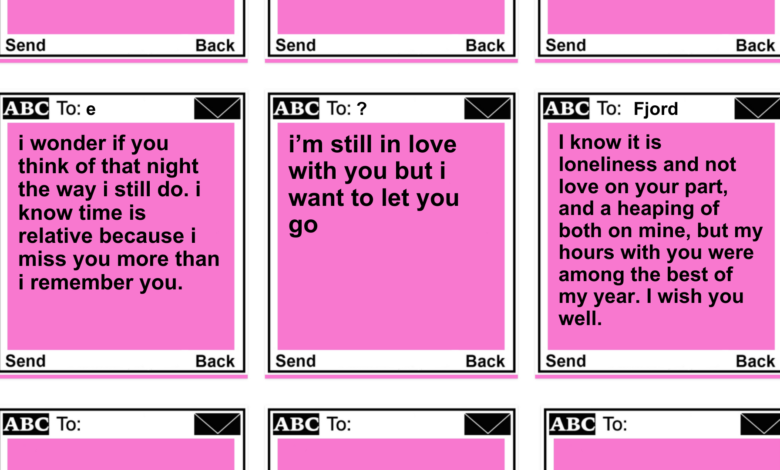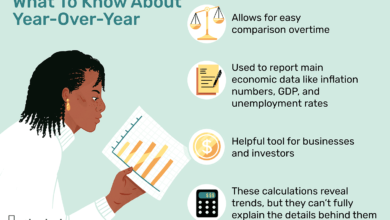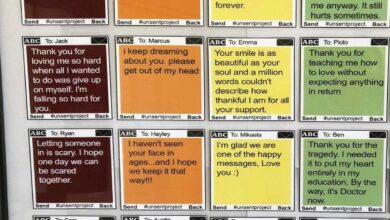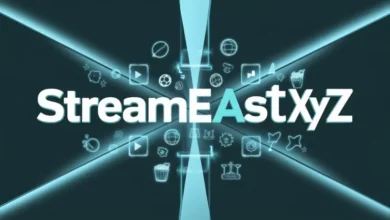Exploring the Unsent Project: A Deep Dive into Unspoken Emotions

Introduction to the Unsent Project
The Unsent Project is a unique initiative designed to help individuals confront and articulate their unexpressed emotions. Born from the need to address the complexities of human feelings that often remain unspoken, this project provides a platform for participants to share unsent letters or messages to people who have had a significant impact on their lives. The origins of the project can be traced back to a growing awareness of mental health and the importance of emotional expression. It highlights how vital it is for people to communicate feelings that, for various reasons, were never conveyed.
The primary purpose of the Unsent Project is to create a safe and supportive environment for individuals to explore their emotional truths. Many people struggle with articulating their feelings, whether due to societal taboos, personal fears, or the complexities of relationships. The act of writing an unsent letter allows for a therapeutic release, enabling individuals to confront their emotions without the pressure of an immediate response from the recipient. This process not only fosters self-reflection but also promotes healing and emotional clarity.
Significantly, the Unsent Project emphasizes the cathartic nature of expression. Participants often report experiencing relief and a sense of closure after articulating their feelings through writing. The project serves as a reminder that even when words remain unspoken, the feelings associated with those words can have a profound impact on one’s emotional well-being. In promoting the exploration of unsent communications, the Unsent Project invites everyone to acknowledge their emotions and recognize the importance of expressing them, even if only on paper. Through this innovative approach, individuals can reclaim their voices and, in turn, foster personal growth and healing.
The Psychology Behind Unsent Messages
Unsent messages often represent a deep reservoir of unexpressed emotions, capturing the complex nature of human communication. Individuals frequently choose to withhold their feelings due to a variety of psychological factors, including fear of vulnerability, societal expectations, and past experiences that encourage emotional restraint. These decisions can be influenced by the desire to avoid conflict or potential rejection, which may stem from deeply ingrained beliefs about self-worth and acceptance.
The implications of not expressing these emotions can significantly affect mental health. When feelings remain unvoiced, individuals may experience increased anxiety, stress, and even depression. The act of suppressing emotions can lead to a build-up of unresolved feelings, which, over time, can create barriers in relationships and contribute to a sense of isolation. This underscores the importance of finding healthy outlets for emotional expression, as the consequences of holding back can be severe.
Interestingly, engaging with the unsent project can serve as a beneficial therapeutic exercise. By writing unsent messages, individuals can articulate their thoughts and feelings without the pressure of immediate interaction. This exercise allows for emotional release, self-reflection, and sometimes, the clarity needed to confront these unspoken issues in a more constructive manner. Furthermore, the practice of documenting emotions can provide a safe space for exploration, helping individuals understand their feelings and potentially breaking free from the constraints imposed by fear and self-doubt.
In essence, the unsent project provides a unique lens into the human psyche, highlighting the value of acknowledging unexpressed emotions. Through this understanding, participants may discover pathways to emotional healing and resilience, empowering them to navigate their feelings with greater confidence.
How the Unsent Project Works
The Unsent Project operates as a digital platform designed to facilitate the expression of unspoken emotions through unsent messages. This initiative allows individuals to anonymously share their heartfelt sentiments without the fear of repercussion or judgment. To contribute, users can easily access the platform’s submission form, typically available on its official website. The process is straightforward and designed to encourage genuine self-expression.
Once on the submission page, individuals are prompted to enter their unsent message. This can range from expressions of love, regret, anger, or any emotions that the sender has found difficult to communicate in person. Participants are invited to reflect on their feelings, allowing them to articulate thoughts they may have kept hidden. The platform emphasizes anonymity, ensuring that contributors feel safe and secure as they share their stories.
After completing the message, users submit it for review. The Unsent Project team curates the submissions to ensure that they resonate with the community and align with the project’s objectives. Common themes that emerge from these submissions include lost opportunities, unresolved relationships, and deep-seated emotions related to family dynamics or friendships. Each message offers a glimpse into the raw, authentic feelings that many individuals struggle to convey, fostering a sense of community among participants.
Furthermore, the Unsent Project also promotes reflection through various storytelling techniques, encouraging individuals to explore the transformative power of expressing unsent thoughts. Submissions are typically anonymized and may be featured on the platform’s social media channels or website, allowing for a broader audience to connect with these shared experiences. Overall, the process not only serves as a therapeutic outlet for contributors but also builds a collective understanding of shared human experiences.
Real Stories from the Unsent Project
The Unsent Project serves as a sanctuary for individuals yearning to express their unspoken feelings, offering a platform where messages that remain unsent can find a voice. These powerful narratives, shared by contributors from diverse backgrounds, capture the essence of human emotions that often go unacknowledged.
One poignant entry comes from a young woman who penned a letter to her estranged father. In her words, she expressed a longing for connection and the pain of absence. “I wish you could see the person I’ve become,” she wrote, revealing how the silence between them left a void that shaped her identity. Such stories highlight the deep emotional struggles many individuals face in their relationships, showcasing the profound need for reconciliation and understanding.
Another moving submission details a man’s reflections on his late grandmother. In his heartfelt message, he shares conversations they never had, emphasizing the invaluable lessons she imparted through love and wisdom. “I never thanked you for your strength,” he admitted, illustrating how unsaid words can linger long after someone has departed. This entry evokes a sense of nostalgia and highlights the importance of cherishing those dear to us.
These heartwarming stories underscore the profound impact of the Unsent Project, making it a vital outlet for expressing unsaid feelings. Each contribution reflects deep-seated emotions that resonate universally, highlighting the power of vulnerability and the healing that often accompanies shared words. Through the unsent messages, individuals confront their fears, connect with others, and embrace the beauty of human experience.
The Impact of the Unsent Project on Community
The Unsent Project has emerged as a vital platform that fosters community among individuals grappling with unspoken emotions. By providing a unique space where participants can anonymously share their unsent messages, the initiative encourages the exploration of feelings that are often left unexpressed. This freedom to articulate one’s thoughts, even if not directly communicated to the intended recipients, serves to validate complex emotions, transforming personal experiences into collective understanding. The shared act of revealing vulnerabilities in a public forum creates an environment steeped in empathy and support.
Through this engagement, individuals forge meaningful connections with others who may resonate with their sentiments. The Unsent Project cultivates a sense of belonging by encouraging participants to recognize the commonality of their experiences. This realization is particularly empowering; it reminds individuals that they are not isolated in their emotional journeys. The identification with similar unsent messages can lead to discussions that break down societal stigmas around mental health and unaddressed feelings, paving the way for deeper emotional connections among participants.
Participation in the Unsent Project often results in the formation of online communities where individuals look out for one another. These virtual support networks frequently celebrate emotional expression while offering a safe haven for those who may still feel apprehensive about sharing their feelings in more conventional settings. Such interactions are instrumental in promoting emotional healing, as they foster an open dialogue about mental health and the intricacies of human emotion. Through collective participation, the Unsent Project not only addresses individual emotional needs but also promotes wider social understanding. This shift in dynamic underscores the impact of the Unsent Project, not just as a platform for sharing sentiments but as a catalyst for community building and emotional resilience.
Finding Closure Through Unsent Messages
Achieving closure is a vital part of emotional well-being, often necessitating a process of reflection and understanding that can help individuals move forward. One of the ways this can be accomplished is through the practice of writing unsent messages. These letters, which are never intended to be delivered, allow individuals to articulate their feelings and thoughts that may have remained unexpressed in personal relationships. By putting pen to paper, individuals can confront emotions that linger, ultimately aiding in the process of healing.
The unsent project embodies this practice, encouraging participants to express their emotions in written form, regardless of whether or not they ever share these sentiments with the intended recipient. Personal anecdotes reveal that many who have engaged in this exercise report feeling a significant relief once they have articulated their feelings. This method not only provides a tangible representation of one’s thoughts but also promotes emotional clarity. When these thoughts are expressed, even privately, individuals can gain a new perspective on their feelings, often leading to a deeper understanding of the unresolved issues in their lives.
Experts suggest that the act of writing unsent messages can evoke a cathartic experience. Psychologists state that this form of expression allows individuals to navigate complex emotions, facilitating a path towards closure. The unsent project can serve as a therapeutic tool that bridges the gap between unspoken feelings and eventual acceptance. By giving voice to sentiments that may have stifled personal growth, individuals can come to terms with their emotional narratives, ultimately fostering the healing necessary to move on from frontiers of emotional distress. This practice underscores the profound impact of unvoiced thoughts and the importance of addressing them for personal development.
Creative Ways to Engage with the Unsent Project
The unsent project serves as a powerful platform for individuals to explore and express their unvoiced emotions. Engaging with this initiative can take various forms, each offering unique pathways toward emotional healing. One prominent method is through workshops that facilitate safe spaces for individuals to share their untold stories. These workshops not only promote self-reflection but also foster community support, allowing participants to connect with others who have similar experiences. By participating in structured activities within the unsent project, individuals can gain insights into their emotional landscapes and learn coping strategies.
Another creative avenue to engage with the unsent project is through social media campaigns. With the prevalence of digital communication, platforms such as Instagram and Facebook can serve as effective tools for sharing experiences. Participants are encouraged to use designated hashtags related to the unsent project, allowing them to vocalize their emotions in a broader context. This encourages collective healing, where individuals can inspire each other through shared narratives, finding solace in the realization that they are not alone in their feelings.
Art exhibitions are also a significant aspect of engaging with the unsent project. Visual art can translate complex emotions into tangible forms, making it easier for individuals to confront and process their unspoken feelings. By showcasing artworks that represent themes of grief, love, and the weight of unsent messages, these exhibitions can ignite dialogues around emotional vulnerability. Such environments not only provide artistic expression but also act as educational spaces where attendees can learn about the importance of emotional awareness and healing.
Collectively, these innovative methods underscore the significance of active participation in the unsent project. Each approach offers a unique entry point into the world of unexpressed emotions, encouraging individuals to embark on their personal journeys toward healing and understanding.
Criticism and Challenges Faced by the Unsent Project
The Unsent Project, despite its noble intentions of promoting emotional expression and connection, has faced its share of criticism and challenges. One of the primary concerns is the risk of emotional vulnerability associated with sharing personal, unsent messages. Participants may grapple with feelings of exposure or judgment, which can deter engagement. As the project encourages individuals to expose their innermost thoughts, it raises questions about privacy and the potential for unintended consequences, particularly when shared publicly. This aspect can be daunting for many, leading to controversy regarding the implications of putting such raw emotions into a public space.
Moreover, there are challenges regarding the diversity of perspectives represented within the Unsent Project. Critics argue that the platform may inadvertently amplify certain voices, creating a limited narrative that does not encompass the full range of human experience. This can marginalize subsets of the community whose stories and emotions may not align with the more dominant narratives. Addressing this challenge requires a commitment from project organizers to actively seek out and include varied voices to foster a more comprehensive understanding of human feelings.
The Unsent Project has acknowledged these criticisms and is making strides to address the underlying challenges. To mitigate the concerns about emotional vulnerability, the project is increasingly focusing on creating safe spaces for sharing, both online and offline. This includes moderated forums and workshops where individuals can express their thoughts without fear of judgment. Additionally, the project is emphasizing the importance of inclusivity by inviting contributions from diverse backgrounds. By doing so, it aims to create a holistic platform that embraces the multifaceted nature of emotions, ultimately enhancing the community’s engagement and support. As the Unsent Project continues to evolve, it strives to better serve its participants while remaining sensitive to their concerns and experiences.
Future of the Unsent Project
The Unsent Project has emerged as a transformative platform dedicated to the exploration of unvoiced emotions. As the world continues to evolve, so too does the potential for the Unsent Project to expand its reach and impact. Looking ahead, there are numerous avenues for growth that could enhance the project’s ability to support individuals in articulating their feelings that often go unexpressed. One prospect is the incorporation of digital tools, such as interactive apps that encourage users to document their unsent letters, thoughts, and poems. By providing a straightforward interface for users to engage with, the project could foster a sense of community where shared experiences lead to greater understanding and healing.
Another promising development is the potential for partnerships with mental health organizations. Collaborating with professionals in psychology could lend further credence to the initiatives of the Unsent Project, offering users a pathway to understanding their emotional landscape. Workshops and online webinars could be organized to create discourse about the significance of processing emotions through unsent communications. These initiatives can facilitate more constructive dialogues, encouraging individuals to embrace their feelings and recognize their value in personal growth.
Moreover, the Unsent Project has the opportunity to explore various forms of art as vehicles for expression. Organizing art exhibitions or poetry slams dedicated to unsent letters might attract wider audiences, raising awareness around the underlying themes of unexpressed sentiment. In essence, by tapping into both creative and therapeutic realms, the Unsent Project can continue to provide individuals with diverse platforms to express their emotions, ensuring that their voices are heard, albeit in a format that resonates with their experience.
As the Unsent Project progresses, the intersection of technology, mental health, and the arts will be key in shaping its future. By prioritizing these elements, the project has the potential to profoundly influence how society perceives and engages with unspoken emotions.
You May Also Read This Usatechzone.




